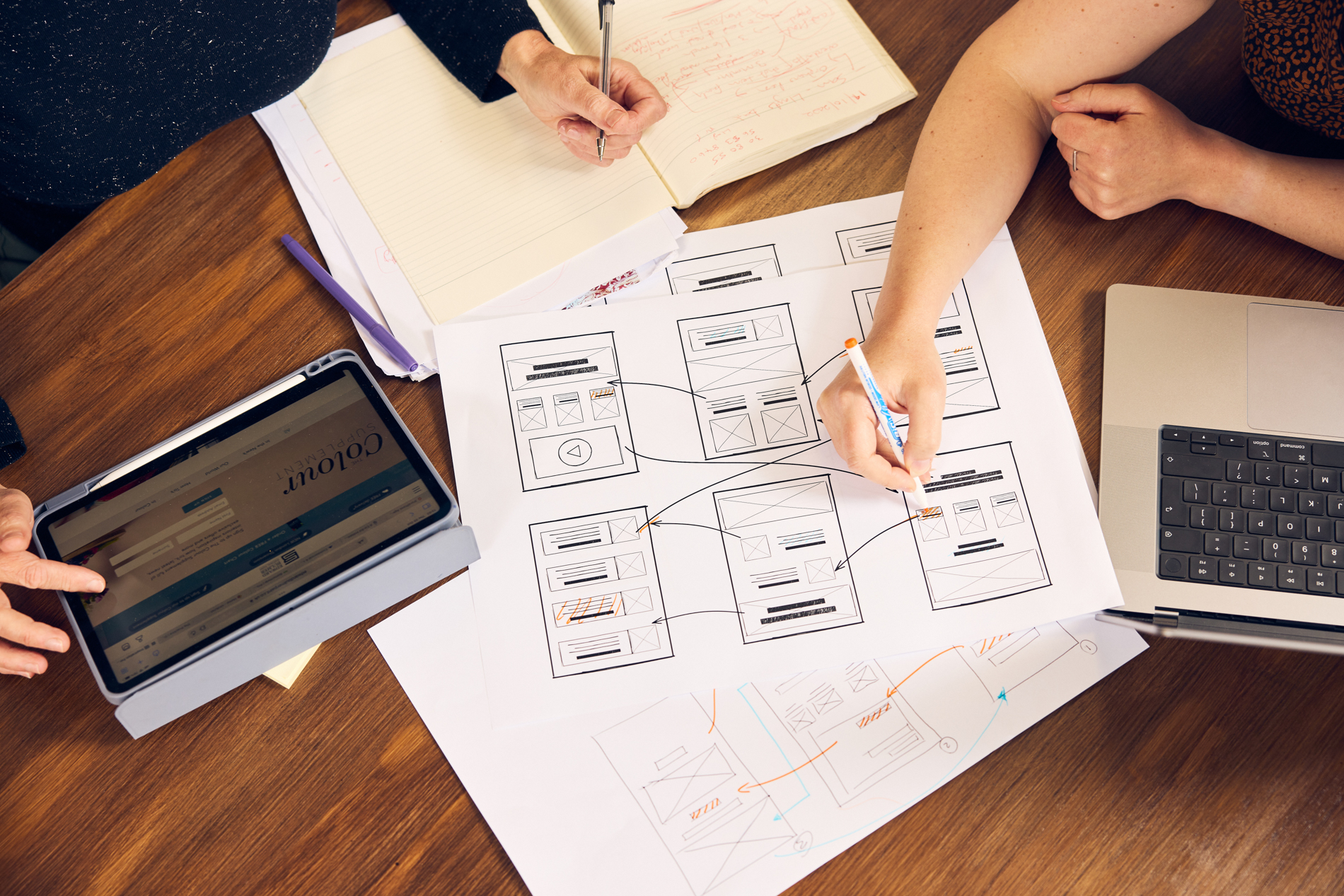We’re all about creating websites which look fantastic, perform brilliantly for your users and are super simple to manage. To get it right, we kick off every project with a detailed Discovery phase which informs everything from site map and content architecture to design.
Here are our six priorities when planning a website:
1. Diving Deep Into Your Business
We need to get under the skin of your business, your brand positioning and your direction of travel. Living and breathing your business means we can really work together to create meaningful results. Cue a discovery workshop or two to get us started. All of our discussions are then summed up onto one page – the Project Intents Plan – which is our reference point throughout the website design and build. It provides an at-a-glance recap on everything we need to achieve and why.
2. Understanding Your Users
Your users are everything. It’s vital that the site offers them an enjoyable, intuitive experience and invites them to return. We work closely with our clients to develop user personas which define your different audiences, their information needs and the key tasks they need to complete. The personas act as a touchstone for a huge range of decisions, from navigation to design elements.
3. Interrogating and Ideating
Throughout the Discovery Phase, expect us to ask lots of questions, challenge assumptions and sense-check everything! We like to explore all the options and to ideate with you so that together we’re 100% confident that our approach will hit the spot.
4. Site Mapping
Next, we’ll collaborate on the site map, working out the best ways to categorise your content, always with your user personas in mind. We will also review site analytics to understand behaviour to date and areas for improvement. Meanwhile, card-sorting and other exercises will help inform which content should be retained, updated, removed, or freshly generated from scratch. The end result is a clear, concise site navigation, which ensures key user journeys are achievable in a minimum of clicks and driven by creative calls to action.
5. Wire-framing and Prototyping
Then we move onto wireframing, defining the content hierarchy and basic layout for each page, including calls to action. At this stage, there is also the option to run user testing on a prototype to ensure it meets expectations of your key audiences.
6. Close Collaboration
It’s all about teamwork! Projects work best when we closely partner with clients to achieve brilliant results together.
Get in touch if you would like to start planning your new web project!




